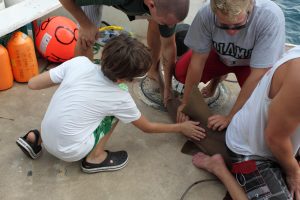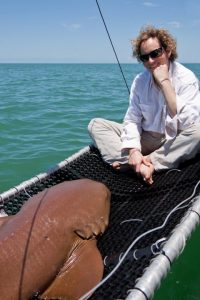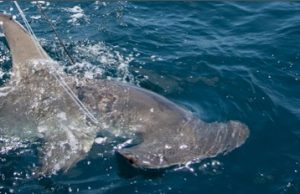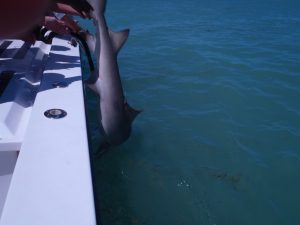Sharks, S’mores, and Sleepovers
Friday, October 14th 2011 – Saturday, October 15th 2011
With the sun shining and calm seas the group from Our Lady of Lourdes Academy (OLLA) and the RJD team set out from Key Largo. Everyone enjoyed a peaceful ride, and some even a nap on the way out to University of Miami’s new station at Broad Key. Spirits and hopes were high for RJD’s second sharking trip at the Broad Key Research station. The first expedition down to Broad Key was during the first week of August and, if not mistaken, brought lemon sharks, bull sharks, and even a great hammerhead!
Today, the day would prove to be not as lucky. The first round of 10 drumlines did not provide us with a shark, but the ladies and team were not deterred. Shark cheers were done and the students and interns sang to encourage the sharks’ cooperation, and finally on the sixth line of the second round a nurse shark was brought to the boat. Measurements, a fin clip, and blood samples were taken quickly and our first shark swam off in great condition with a new tag! The weather slowly changed throughout the day and dark clouds in the distance threatened us with rain. Luckily the rain held off until late at night and we were able to tag and take samples from one more nurse shark from our remaining 14 lines.
Back on Broad Key we got time to relax and were treated with a beautiful sunset and a bonus of two lemon sharks caught right off the dock. Both sharks received spaghetti tags, were sampled, measured, and released in great condition. Burgers and s’mores were roasted and the day was put to rest.

The AP Environmental class from Our Lady of Lourdes, Capt. Curt, and RJD intern Virginia, and oh yea,…a beautiful lemon shark; all smiles. Click to enlarge.
The second day we got an earlier start and everyone was excited for a great day on the boat. Unfortunately a front had moved in over night and we were dealt a cold and very windy day. Despite the conditions, the girls from OLLA were very spirited, singing to the sharks. Not a single hook made it into the water without a kiss for good luck. Despite the best efforts of the RJD team and the OLLA ladies, the second ever strikeout for the RJD program was recorded; we caught nothing. Interesting to note, the first strike out occurred on an equally windy and rainy day. Seems as if sharks tend to get a little lockjaw on days when the weather is not the best. Comparing the sample sizes across different weather conditions would be an interesting analysis. In the words of our director, Dr. Neil Hammerschlag, with shark populations declining quite rapidly, we should feel lucky every time we see a shark at all. The lack of sharks that were caught on the trip just goes to remind us how lucky we are to work with the animals we do (when we do), and how important the research and conservation work that we do is.
Even without many sharks being caught and uncooperative weather, I think it would be safe to say that everyone on the trip had a great time. The AP Environmental class that joined us out on Broad Key was able to learn not only about sharks, and the research we do with them, but they had a chance to do real fieldwork in the mangroves and seagrass beds as well. We would like to thank everyone from Our Lady of Lourdes Academy for coming out with RJD to tag sharks and for their great enthusiasm and cooperation.
Till next time, keep spreading the shark love!
Evan Byrnes, RJ Dunlap Intern






















